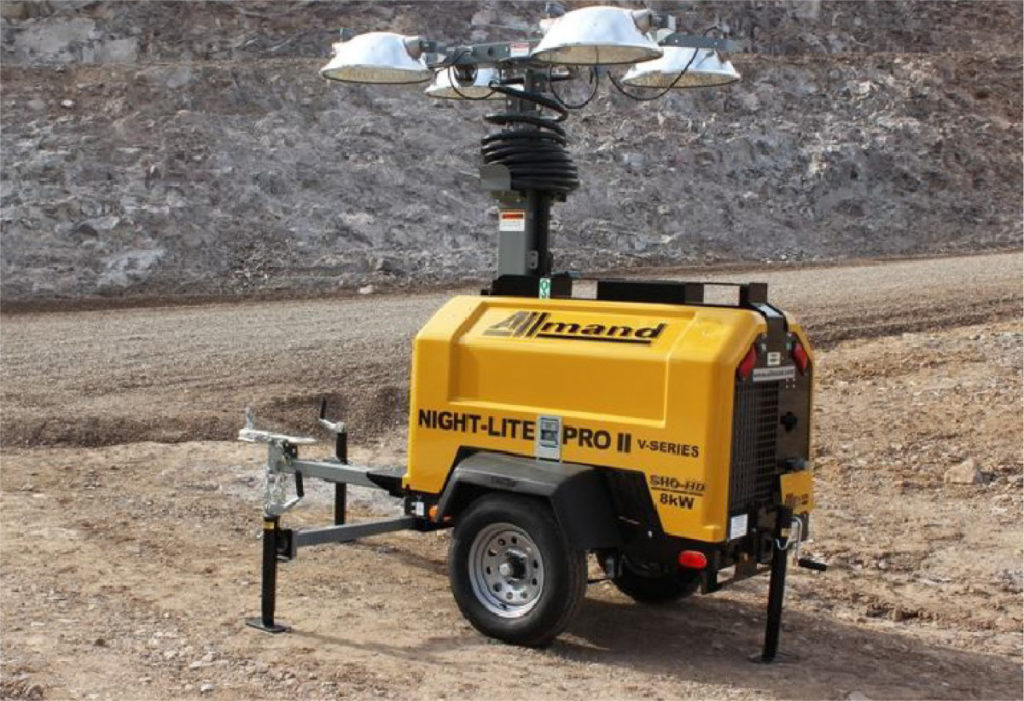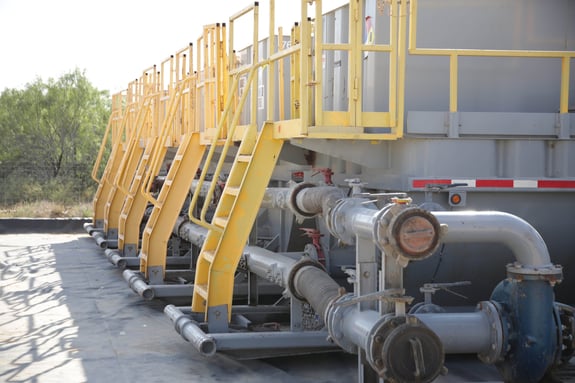A comprehensive overview to Superior Oilfield Rentals Texas and what it offers
A Comprehensive Guide to the Various Sorts Of Oil Field Equipment and Pipeline Equipment Available
The oil and gas industry relies heavily on specialized devices for reliable removal and transport. Numerous kinds of equipment, from drilling rigs to storage tanks, play important duties in this complicated process. Each tool offers distinctive features that add to total functional success. Comprehending these parts is essential for anyone associated with the field. As the sector progresses, so as well do the innovations that support it. What advancements are on the horizon?

Drilling Rigs: The Foundation of Oil Exploration
Drilling rigs work as the essential machinery in the domain name of oil exploration, making it possible for firms to accessibility hydrocarbon reserves hidden deep below the Earth's surface area. These rigs can be found in numerous kinds, consisting of land rigs, offshore rigs, and mobile devices, each made to run in particular environments. Geared up with innovative technology, piercing rigs can permeate geological formations with accuracy, guaranteeing efficient resource extraction. The structural stability and operational capabilities of these rigs are essential, as they should withstand extreme conditions and substantial stress. Additionally, the selection of a drilling gear impacts the overall project cost and timeline, making it a crucial factor to consider for oil firms looking for to optimize their exploration efforts and take full advantage of efficiency in their procedures.
Pumps: Vital for Fluid Movement
In the oil extraction procedure, the duty of pumps is substantial, assisting in the motion of fluids throughout different stages of production. Pumps are essential for transporting petroleum, water, and various other liquids from underground storage tanks to the surface area and after that with pipes to refineries. They are available in various kinds, consisting of centrifugal, positive variation, and completely submersible pumps, each serving specific objectives based upon the fluid qualities and functional demands. Centrifugal pumps are typically used for their performance in high-flow applications, while positive displacement pumps master dealing with viscous liquids. The option of pump impacts total effectiveness, functional security, and maintenance expenses. Proper option and upkeep of pumps are important for maximizing production and decreasing downtime in oil field operations.
Shutoffs: Managing Circulation and Pressure

Shutoffs play a vital role in handling the circulation and stress of liquids within oil areas and pipelines. Various kinds of valves serve unique applications, each made to fulfill particular functions essential for effective procedure - Superior Rentals fusion machines. Comprehending the attributes and uses these shutoffs is crucial for maximizing system efficiency and safety and security
Kinds of Valves
Crucial parts in oil area procedures, valves play an important function in managing the flow and pressure of fluids within pipes and tools. Numerous kinds of valves are used to satisfy the diverse demands of oil and gas manufacturing. Typical types include entrance shutoffs, which provide a straight-line flow and minimal pressure decrease; globe valves, recognized for their strangling capacities; and round shutoffs, recognized for their fast on/off control. In addition, check shutoffs avoid heartburn, while butterfly valves supply a lightweight remedy for controling flow. Each shutoff kind is developed with specific products and setups to endure the harsh problems commonly discovered in oil fields, ensuring reliability and performance in operations. Recognizing these kinds is crucial for reliable system administration.
Valve Applications and Functions
While numerous types of valves serve distinctive purposes, their key applications focus on controlling flow and stress within oil and gas systems. Valves such as gateway, globe, and round valves manage fluid activity, guaranteeing peak efficiency and security. Gateway valves are generally utilized for on/off control, giving minimal circulation resistance. World valves, on the various other hand, offer exact circulation policy, making them ideal for throttling applications. Sphere shutoffs are favored for their quick procedure and limited sealing abilities. Furthermore, pressure safety valve are crucial for protecting against system overpressure, safeguarding devices stability. In general, the proper option and application of valves improve functional performance, ensuring the reputable transportation of oil and standing water in sewer cleanout gas via pipelines and processing centers.
Compressors: Enhancing Gas Transportation
Compressors play an essential function in the reliable transportation of all-natural gas, ensuring that it moves smoothly with pipes over fars away. These devices raise the stress of gas, allowing it to conquer friction and elevation modifications within the pipeline system. In addition, compressors promote the balancing of supply and demand, accommodating fluctuations in consumption and production rates. Various sorts of compressors are employed in the industry, including centrifugal, reciprocating, and rotary screw compressors, each offering distinct benefits based upon the operational demands. Regular upkeep of these compressors is necessary to maximize effectiveness and lessen downtime, ultimately contributing to a reliable gas transportation network. Their important feature highlights the significance of compressors in the general oil and gas infrastructure.
Storage Tanks: Safe and Efficient Liquid Monitoring
Reliable transport of natural gas counts on different support group, among which is the correct monitoring of tank. These tanks play an essential duty in securely including liquids, making sure that operational efficiency is maintained while minimizing ecological dangers. Constructed from sturdy materials, they are designed to hold up against high pressures and harsh aspects. Correctly sized and strategically situated, tank assist in the smooth flow of gas and other liquids, avoiding traffic jams in supply chains. Regular upkeep and surveillance are critical to find leaks or structural concerns, promoting safety and security and compliance with governing standards. Eventually, the effective management of tank is essential for the overall stability and reliability of the oil and gas market's liquid handling systems.
Pipeline Systems: Facilities for Transportation
Pipeline systems act as the backbone of the oil and gas sector, helping with the effective transport of hydrocarbons over vast distances. These systems contain various elements, consisting of pipelines, valves, pumps, and compressors, all diligently made to guarantee seamless flow. The materials utilized in pipeline building and construction, commonly steel or high-density polyethylene, are selected for toughness and resistance to deterioration. Pipeline networks can extend throughout land and water, linking production sites to refineries and circulation centers. Additionally, advanced innovation allows real-time tracking of circulation rates and pressure levels, enhancing operational effectiveness. The calculated positioning of these pipes lessens ecological influence while making the most of resource access, thereby playing an important role in meeting energy needs around the world.
Safety And Security Equipment: Ensuring Employee and Environmental Defense
The procedure of pipeline systems, while crucial for power transportation, also presents substantial safety and security obstacles for employees and the atmosphere. Safety tools plays a significant duty in mitigating these threats. Individual protective equipment (PPE) such as helmets, handwear covers, and non-slip footwear safeguards workers from physical threats. Additionally, gas discovery systems monitor for leakages, making certain that unsafe compounds do not position a threat to employees or the surrounding ecosystem. Emergency situation closure systems are imperative for promptly halting procedures during a crisis, protecting against prospective disasters. Spill control materials, consisting of absorbents and barriers, are essential for reducing ecological influence. Generally, purchasing all-encompassing safety and security equipment is essential for preserving functional honesty and shielding both go now employees and the atmosphere in the oil and gas field.

Regularly Asked Inquiries
Exactly how Do I Choose the Right Oil Field Equipment for My Project?
Selecting the appropriate oil field equipment involves assessing job specs, budget plan road roller restraints, and functional demands. Think about elements such as devices dependability, compatibility with existing systems, and the provider's credibility to ensure peak performance and safety.
What Are the Upkeep Needs for Oil Field Equipment?
Upkeep demands for oil field equipment include normal examinations, lubrication, and prompt repair services. Operators ought to also comply with manufacturer standards, screen performance metrics, and guarantee conformity with security policies to enhance long life and effectiveness.

How Can I Make Sure Conformity With Environmental Regulations?
To ensure conformity with environmental policies, business have to conduct routine audits, apply best practices, buy training, preserve correct documentation, and stay updated on regulation (Superior Rentals fusion machines). Collaboration with environmental agencies can also improve adherence to guidelines
What Is the Typical Life-span of Pipeline Equipment?
The ordinary life-span of pipeline tools typically ranges from 20 to 50 years, depending on elements such as material quality, environmental conditions, and maintenance practices. Normal inspections can greatly affect long life and functional effectiveness.
Exactly how Do I Safely Carry Oil Field Equipment to Remote Locations?
Delivering oil area devices to remote locations requires mindful preparation, consisting of path assessment, safeguarding authorizations, making use of proper automobiles, and guaranteeing safety protocols are adhered to. Correct training and communication among staffs are crucial for effective transportation.